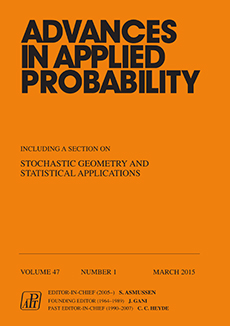Abstract
This paper is concerned with the bottom-up hierarchical system and public debate model proposed by Galam (2008), as well as a spatial version of the public debate model. In all three models, there is a population of individuals who are characterized by one of two competing opinions, say opinion -1 and opinion +1. This population is further divided into groups of common size s. In the bottom-up hierarchical system, each group elects a representative candidate, whereas in the other two models, all the members of each group discuss at random times until they reach a consensus. At each election/discussion, the winning opinion is chosen according to Galam's majority rule: the opinion with the majority of representatives wins when there is a strict majority, while one opinion, say opinion -1, is chosen by default in the case of a tie. For the public debate models we also consider the following natural updating rule that we call proportional rule: the winning opinion is chosen at random with a probability equal to the fraction of its supporters in the group. The three models differ in term of their population structure: in the bottom-up hierarchical system, individuals are located on a finite regular tree, in the nonspatial public debate model, they are located on a complete graph, and in the spatial public debate model, they are located on the d-dimensional regular lattice. For the bottom-up hierarchical system and nonspatial public debate model, Galam studied the probability that a given opinion wins under the majority rule and, assuming that individuals' opinions are initially independent, making the initial number of supporters of a given opinion a binomial random variable. The first objective of this paper is to revisit Galam's result, assuming that the initial number of individuals in favor of a given opinion is a fixed deterministic number. Our analysis reveals phase transitions that are sharper under our assumption than under Galam's assumption, particularly with small population size. The second objective is to determine whether both opinions can coexist at equilibrium for the spatial public debate model under the proportional rule, which depends on the spatial dimension.
Citation
N. Lanchier. N. Taylor. "Galam's bottom-up hierarchical system and public debate model revisited." Adv. in Appl. Probab. 47 (3) 668 - 692, September 2015. https://doi.org/10.1239/aap/1444308877
Information





